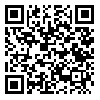Volume 7, Issue 5 (Shenakht Journal of Psychology and Psychiatry 2020)
Shenakht Journal of Psychology and Psychiatry 2020, 7(5): 1-14 |
Back to browse issues page
1- Assistant Professor, Department of Sport Psychology, University of Tehran, Tehran, Iran
2- M.A. of Sport Psychology, Department of Sport Psychology, University of Tehran, Tehran, Iran , davoodvalipoor71@ut.ac.ir
2- M.A. of Sport Psychology, Department of Sport Psychology, University of Tehran, Tehran, Iran , davoodvalipoor71@ut.ac.ir
Abstract: (2961 Views)
Introduction: Mental imagery is one of the psychological skills that sports psychologists recommend athletes to focus on.
Aim: This study aimed to investigate the effects of PETTLEP and traditional mental imagery on handball triple shooting in novice and professional adolescent handball players.
Method: A semi-experimental study was conducted on all novice and professional adolescent handball players in Maragheh, East Azerbaijan Province, Iran, in 2018-2019. By using the revised Movement Imagery Questionnaire (MIQ-R) (Hall and Martin, 1997), 60 people from the statistical population were purposively selected as the sample. The participants were randomly assigned to 5 groups of 12: two groups of traditional mental imagery at the novice and professional levels, two groups of PETTLEP imagery at the novice and professional levels, and a control group. After the 9-meter line test as the pretest, 3 sessions of group training for 7 weeks and then the posttest were performed. The data were statistically analyzed by using the repeated measures ANOVA and the Tukey's test in SPSS-23.
Results: The results showed that professional participants in the PETTLEP imagery group significantly outperformed their peers in the traditional imagery group in handball triple shooting (P=0.001). By contrast, such a significant difference was not observed between the two groups of novice handball players (P>0.05). The results also indicated that the highest increase in mean score from pretest to posttest was observed among professional handball players in the PETTLEP imagery group.
Conclusion: Mental imagery can effectively improve the performance of athletes. Therefore, it is recommended to be used in combination with physical exercises.
Aim: This study aimed to investigate the effects of PETTLEP and traditional mental imagery on handball triple shooting in novice and professional adolescent handball players.
Method: A semi-experimental study was conducted on all novice and professional adolescent handball players in Maragheh, East Azerbaijan Province, Iran, in 2018-2019. By using the revised Movement Imagery Questionnaire (MIQ-R) (Hall and Martin, 1997), 60 people from the statistical population were purposively selected as the sample. The participants were randomly assigned to 5 groups of 12: two groups of traditional mental imagery at the novice and professional levels, two groups of PETTLEP imagery at the novice and professional levels, and a control group. After the 9-meter line test as the pretest, 3 sessions of group training for 7 weeks and then the posttest were performed. The data were statistically analyzed by using the repeated measures ANOVA and the Tukey's test in SPSS-23.
Results: The results showed that professional participants in the PETTLEP imagery group significantly outperformed their peers in the traditional imagery group in handball triple shooting (P=0.001). By contrast, such a significant difference was not observed between the two groups of novice handball players (P>0.05). The results also indicated that the highest increase in mean score from pretest to posttest was observed among professional handball players in the PETTLEP imagery group.
Conclusion: Mental imagery can effectively improve the performance of athletes. Therefore, it is recommended to be used in combination with physical exercises.
Type of Study: Research |
Subject:
Special
Received: 2020/08/17 | Accepted: 2020/10/5 | Published: 2020/12/12
Received: 2020/08/17 | Accepted: 2020/10/5 | Published: 2020/12/12
| Rights and permissions | |
 |
This work is licensed under a Creative Commons Attribution-NonCommercial 4.0 International License. |






